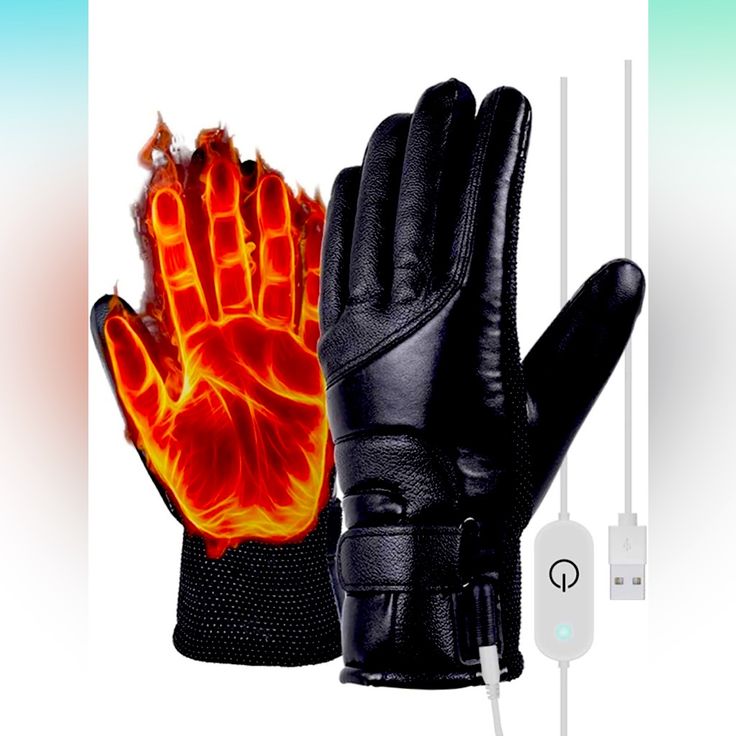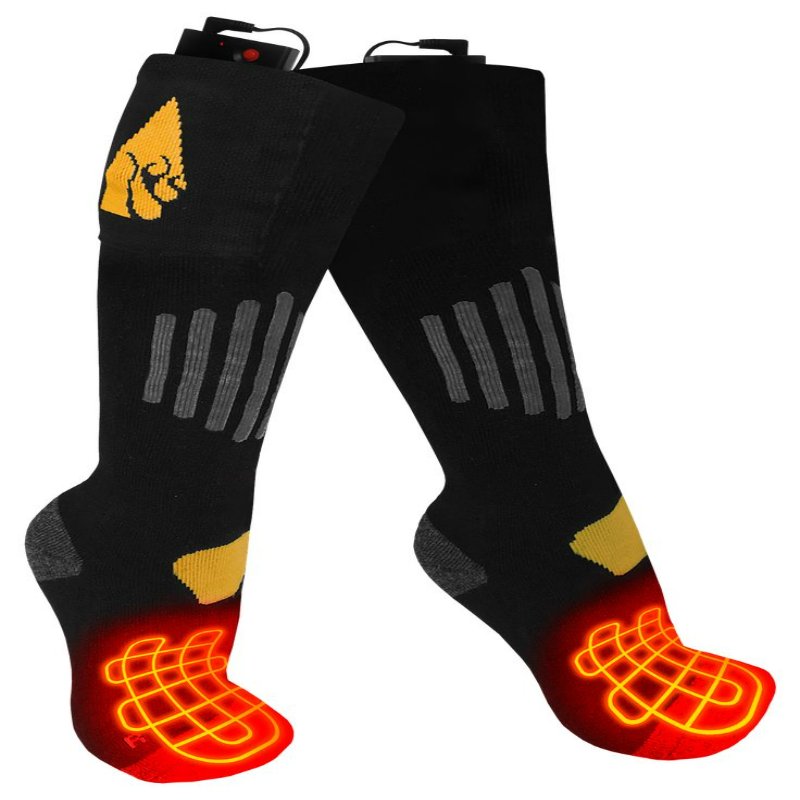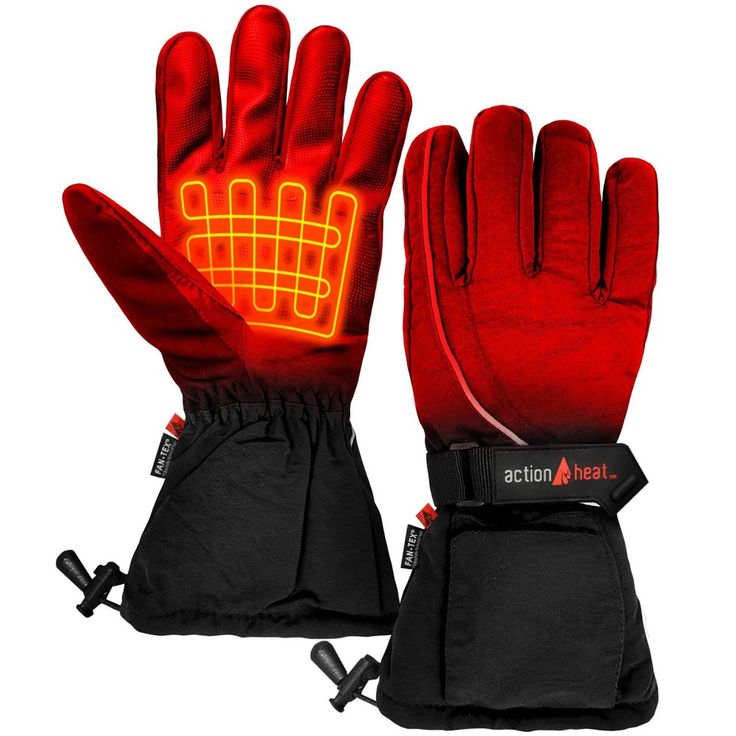As the winter chill sets in, many outdoor enthusiasts and cold-weather warriors start to rethink their layering strategies, especially when it comes to extremities like hands and feet. Enter heated gloves and socks—innovative pieces of technology that claim to provide a constant warmth in the coldest of conditions. But do they really work? In this comprehensive review, we’ll delve into the mechanics of heated gloves and socks, their effectiveness, pros and cons, and what you should consider before purchasing.
Understanding Heated Technology: How Do Heated Gloves and Socks Work?
Heated gloves and socks utilize advanced heating technology that is designed to keep your hands and feet warm during those frigid winter outings. At the core, they typically incorporate conductive fibers woven into the fabric, which generate heat through electrical resistance. This is powered by rechargeable batteries that are discreetly integrated into the gloves or socks, allowing for adjustable heat settings.
When discussing the effectiveness of heated gear, it’s critical to understand the various components that contribute to their functionality. High-quality heated gloves and socks feature multiple heat zones, ensuring even distribution across key areas such as the fingertips, palms, and toes. Most products come with various heat settings that allow users to select the optimum temperature for their activities, whether they are skiing on the slopes, hiking in the cold, or simply shoveling the driveway.
Moreover, the material composition plays a significant role in performance. Quality heated garments are typically crafted from moisture-wicking fabrics that not only trap warmth but also prevent sweat build-up, which can lead to discomfort. Therefore, understanding the mechanics behind heated gloves and socks is crucial in evaluating their effectiveness and ensures that you make an informed choice when winter arrives.

Do Heated Gloves Really Work? A Look at Performance and Features
When considering if heated gloves are worth the investment, performance and features are central criteria. First, let’s discuss heat distribution. The best heated gloves are designed to quickly warm up, often within a few minutes of activation. Many users appreciate gloves that reach a comfortable temperature without excessive wait time, especially if they’re about to head out on an ice-cold morning.
The longevity of the heat is another critical factor. Quality products feature batteries that can last several hours, depending on the heat setting. For example, on the highest setting, you may expect around three to five hours of heat, whereas the lowest setting could extend that to six or more. It’s vital to consult user reviews and manufacturer specifications to assess whether a particular brand meets your expected usage time.
Additionally, comfort and fit are absolutely paramount. Heated gloves that are too bulky or poorly designed can severely limit dexterity, making it difficult to perform intricate tasks like adjusting ski equipment or handling a smartphone. Many brands have worked diligently to develop ergonomic designs that allow for both warmth and dexterity, making them suitable for various winter activities.
Finally, consider extra features like waterproofing and touch-screen compatibility. In a world where connectivity is essential, gloves that allow for smartphone interaction without removal become increasingly popular. Additionally, waterproofing can add a layer of utility, allowing the user to remain warm even in wet conditions.
The Real-Life Experience: Heated Socks that Keep You Warm
While heated gloves have garnered much attention, heated socks are another worthwhile conversation. Many people suffer from cold feet during winter months, which can detract from outdoor enjoyment and even lead to more severe conditions like frostbite. Heated socks are designed with specific features that address cold feet issues head-on.
The heating mechanism is usually located at the toe area, as it is the part of the foot most susceptible to the cold. Just like heated gloves, these socks are powered by rechargeable batteries often found in a pocket on the calf area. The best heated socks offer adjustable heat settings, giving users the ability to choose a temperature that works best for them based on the ambient conditions. Some models even provide heat for up to eight hours, making them a great option for long-distance hikes or day-long excursions.
Another feature to consider when evaluating heated socks is the fabric. Many high-end options use blend materials that wick moisture away while maintaining warmth. This is particularly important because moisture can lead to a rapid drop in temperature, nullifying the very purpose of heated socks. Additionally, ergonomic designs that provide compression can enhance blood circulation, further boosting heat retention within the feet.
Moreover, user feedback often emphasizes comfort. Socks that are plush yet supportive and don’t scratch or irritate the foot can dramatically enhance the user experience. Make sure to read reviews that focus not just on warmth, but on overall comfort and fit as well.

Pros and Cons of Heated Gloves and Socks: Weighing Your Options
Like any product, heated gloves and socks come with their own sets of advantages and disadvantages. When considering whether these products suit your winter lifestyle, let’s break down the pros and cons.
Pros
Increased Comfort: One of the most significant benefits is the enhanced comfort in cold conditions. Heated gloves and socks drastically reduce discomfort from low temperatures, allowing for extended outdoor activities.
Improved Performance: With optimal blood flow and warmth, you can perform tasks that may have seemed daunting due to cold, thereby improving your performance whether you’re skiing, hiking, or working outdoors.
Customizability: Many heated gloves and socks offer multiple heat settings, meaning that you can adjust them according to your individual needs.
Health and Safety: These products can help prevent frostbite and other cold-related ailments, particularly for individuals who don’t like cold sensitivity, such as those with diabetes or poor circulation.
Cons
Cost: Heated gloves and socks tend to be more expensive than their non-heated counterparts. If you’re looking for budget options, you may find these models lacking in durability and effectiveness.
Battery Dependency: While the technology is impressive, reliance on battery power can be an issue. If you forget to charge them, you could end up without warmth, so it’s essential to manage battery life wisely.
Weight and Bulk: Although manufacturers work to create slimmer designs, some heated models can still be bulkier than traditional gloves or socks, which might affect dexterity and mobility.
Maintenance: The need for battery management and occasional maintenance can add an extra layer of responsibility for the user.

Recommendations: Choosing the Right Heated Gloves and Socks
Having established the effectiveness of heated gloves and socks and weighed their pros and cons, choosing the right pair becomes a crucial step. Here are several factors to keep in mind while shopping:
Battery Life: Always evaluate the battery longevity based on your intended activities. If you partake in long outdoor excursions, look for products with extended battery life.
Heat Settings: Adjustable heat settings can make a significant difference in usability. Opt for gloves and socks that allow for customization based on environmental factors and physical activity levels.
Material Quality: Invest in gloves and socks made from high-quality, moisture-wicking materials that enhance warmth while allowing for breathability. This can make all the difference in comfort during extended wear.
Fit and Comfort: Comfort is subjective, so factor in whether the options are available in various sizes, and consider trying them on if possible. Ergonomic designs can greatly enhance user satisfaction.
Brand Reputation: Research brands that have consistently positive reviews focused on performance, customer service, and warranty policies. A reliable brand can provide peace of mind when investing in heated gear.
Conclusion: Are Heated Gloves and Socks Worth Your Investment?
In summary, heated gloves and socks are proven technologies that work effectively to keep your hands and feet warm during the winter’s harshest conditions. They are especially beneficial for athletes, outdoor workers, and anyone else who frequently finds themselves exposed to the cold. While there are some drawbacks—such as cost, dependency on battery power, and potential bulkiness—the benefits often outweigh these concerns, particularly for those susceptible to cold extremities.
Choosing the right pair requires careful consideration of factors like battery life, material quality, and flexibility in heat settings. Whether you opt for heated gloves, heated socks, or both, you can confidently embrace winter without the worry of freezing fingers or toes.